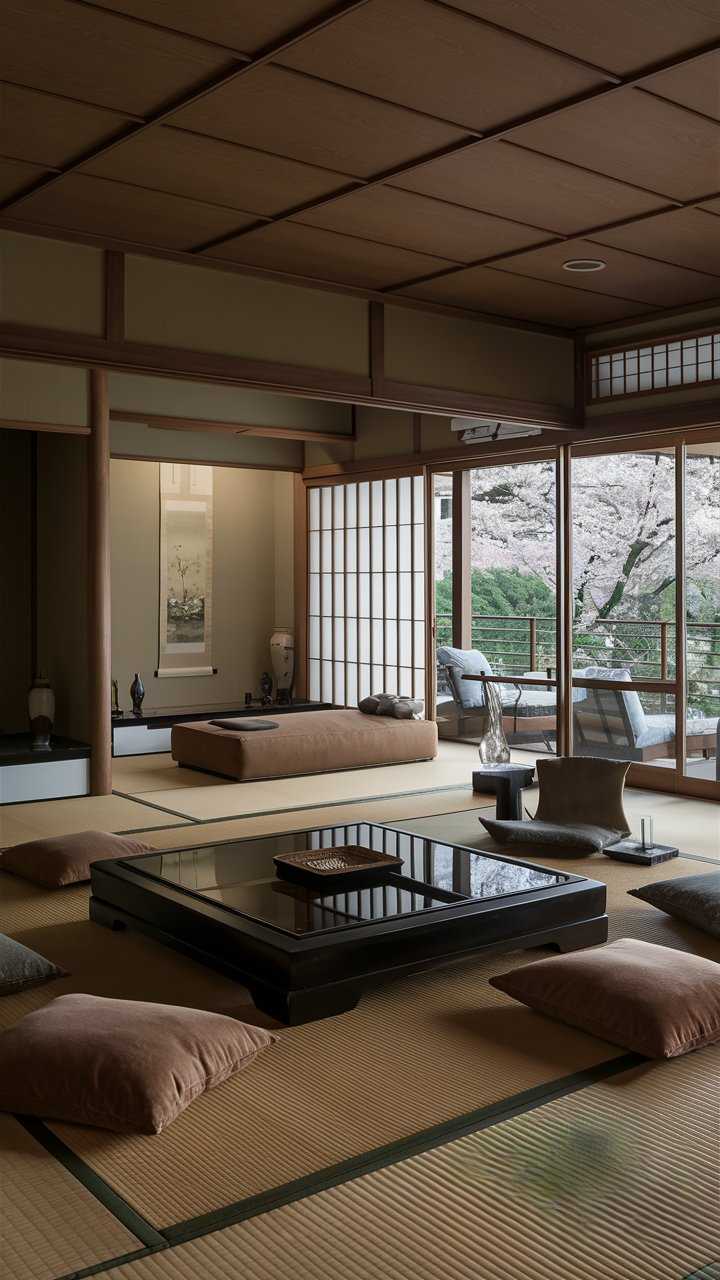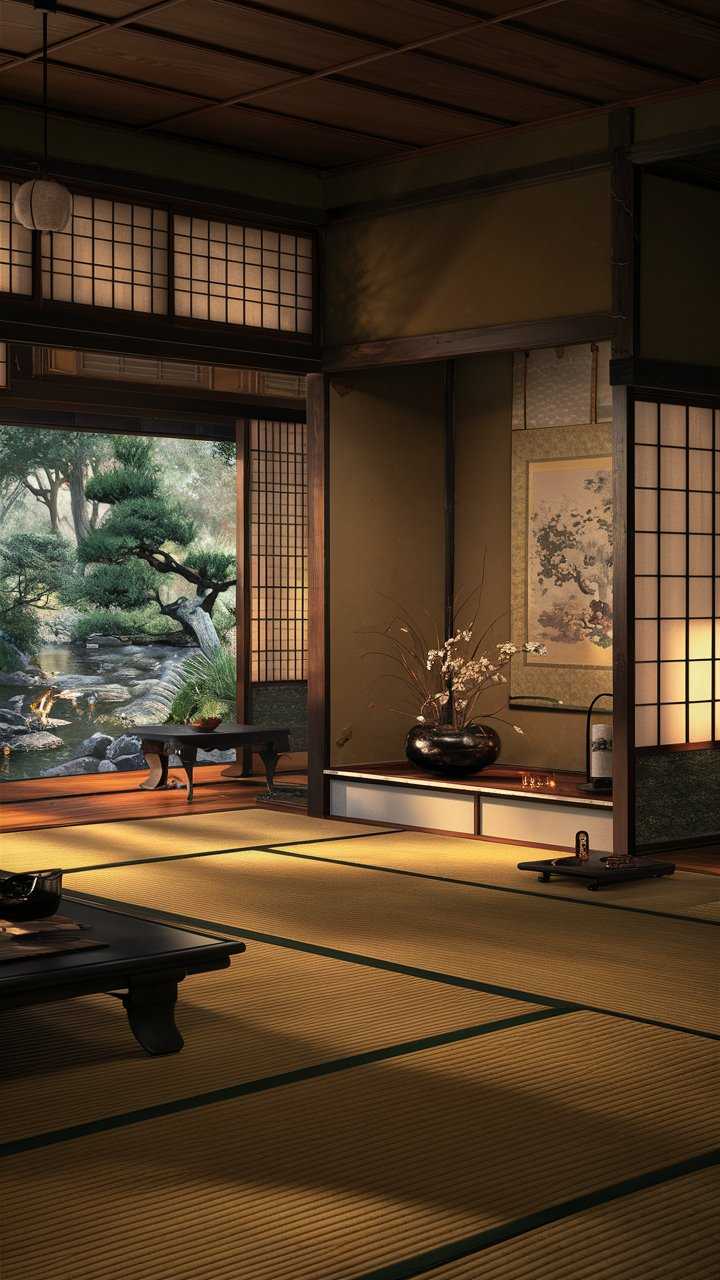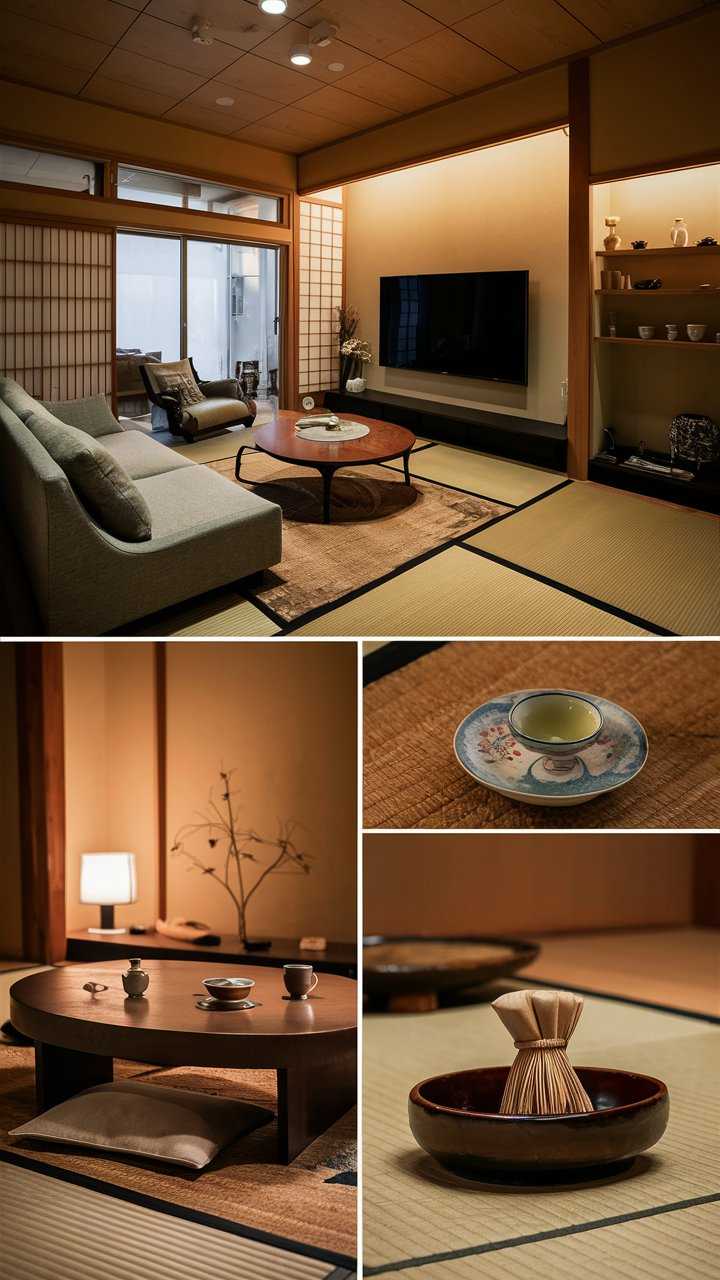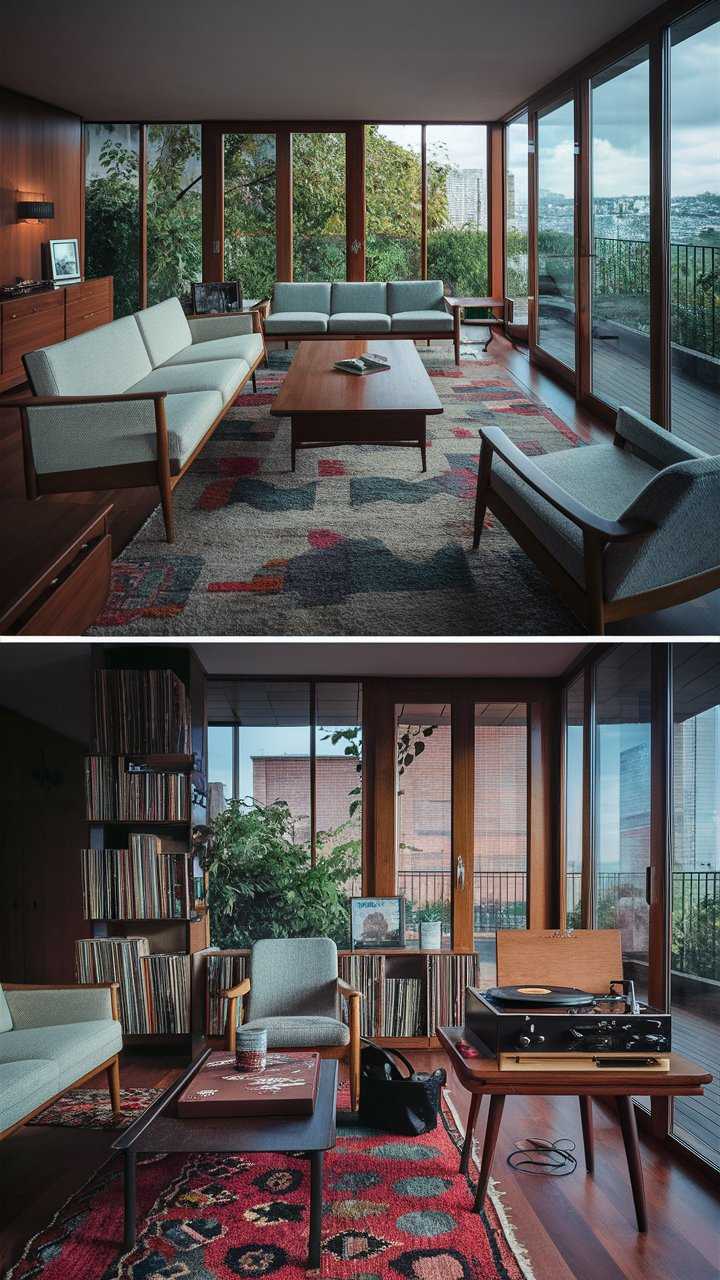Zen-Inspired Japanese Style Living Room Ideas
The Zen-inspired Japanese style living room is all about peace, simplicity, and beauty. It’s about making spaces that connect us to nature and calm our minds. By using Japanese design ideas, we can make our living rooms peaceful places.
A well-designed living room is the heart of the home. It’s where we relax and find peace. By choosing a minimalist design, we make our living rooms not just beautiful but also peaceful.
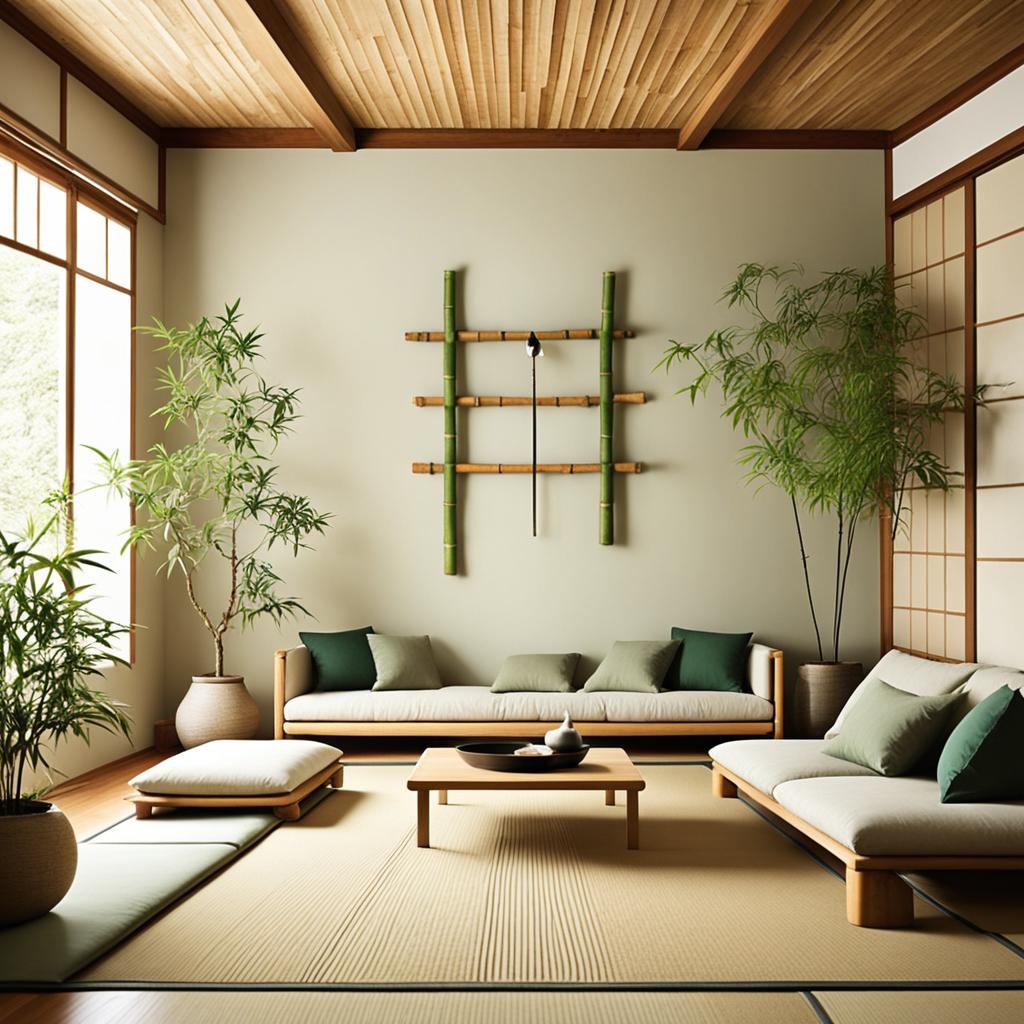
Key Takeaways
- Emphasize minimalist design for a clutter-free environment.
- Incorporate zen decor to enhance tranquility.
- Utilize natural elements to connect with nature.
- Focus on creating a calming atmosphere for relaxation.
- Pay attention to color and lighting for a serene space.
Understanding Japanese Interior Design Principles
Japanese interior design combines simplicity with elegance. Each detail is chosen with care to make a peaceful space. Key principles like minimalist design, wabi-sabi philosophy, and natural materials create a calm atmosphere in a living room.
The Essence of Minimalism
Minimalism is key in Japanese design, promoting a clean and peaceful space. A clutter-free room means less stress. Furniture and decor should be functional yet allow the eye to move freely.
Wabi-Sabi: Beauty in Imperfection
Wabi-sabi celebrates the beauty of imperfection and life’s fleeting nature. It turns a space into a reflection of authenticity and character. Using handcrafted items or rustic textures adds uniqueness and warmth to a room.
Natural Materials and Their Importance
Using natural materials is essential in Japanese design. Wood, bamboo, and stone bring the outdoors in. They add warmth and fit well with a minimalist look. Adding watercolor floral wallpaper can make the connection between indoors and outdoors even stronger.
Creating a Serene Atmosphere
To make a Japanese style living room peaceful, focus on the ambiance. Use a neutral color palette and soft lighting. These elements make the room look beautiful and help you relax and be mindful.
Choosing a Neutral Color Palette
A neutral color palette is key for zen decor. Colors like white, grey, and earth tones calm the mind. They bring the beauty of nature inside, making it easier to relax and find peace.
Soft Lighting Techniques
Soft lighting is important for a peaceful Japanese style living room. Use table lamps, candles, or dimmed lights for a gentle glow. This lighting goes well with the neutral colors, making the room calm and perfect for reflection.
| Lighting Type | Effect on Atmosphere | Recommended Use |
|---|---|---|
| Table Lamps | Creates a warm, inviting glow | Reading corners or side tables |
| Candles | Enhances relaxation with flickering light | Accent pieces on mantels or coffee tables |
| Dimmed Overhead Lights | Maintains soft overall illumination | General room lighting for evening ambiance |
Incorporating Zen Decor Elements
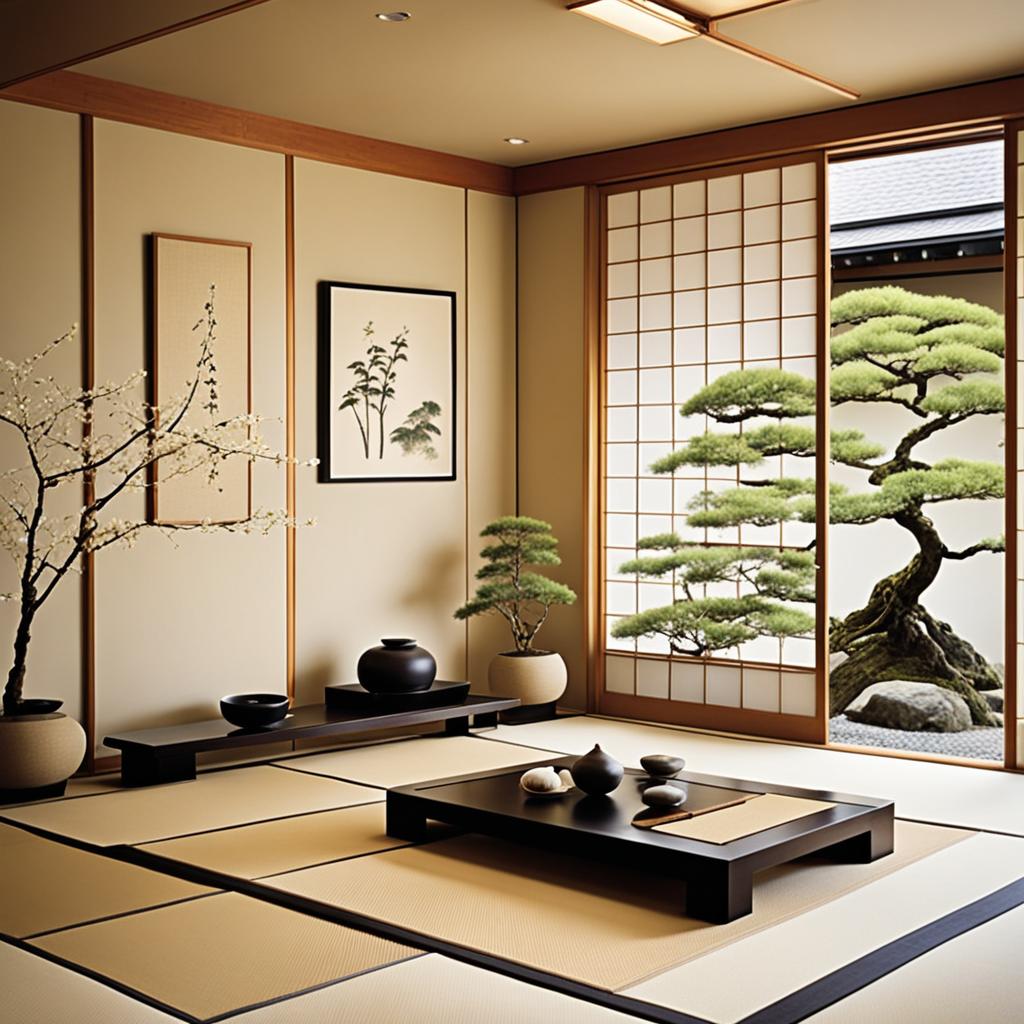
Adding zen decor to your space can deeply change its feel. By using natural elements and careful arrangements, you make a peaceful place that follows Japanese style. Adding indoor plants, like bonsai trees, and ikebana arrangements brings calm and connects you with nature. Zen gardens or water features also add calming sights that help you focus on the moment.
Indoor Plants and Bonsai Trees
Indoor plants are key to making a room feel better. Bonsai trees are especially important. They bring greenery and symbolize balance in nature. Putting a bonsai tree in a key spot can draw attention and help you relax.
Ikebana Arrangements for Tranquility
Ikebana arrangements make any room look better. This Japanese art is all about simplicity and balance, fitting well with zen decor. Choosing seasonal flowers and arranging them carefully creates beautiful displays that bring calm. Ikebana’s simple style lets each piece shine, making the space peaceful.
Zen Gardens and Water Elements
Zen gardens and water features make a space more peaceful. Small Zen gardens let you enjoy sand and stones, helping you relax. Tabletop fountains add calming sounds, making mindfulness easier. These elements work well with other zen decor, making the space more serene.
| Zen Decor Element | Benefits | Recommended Placement |
|---|---|---|
| Bonsai Trees | Promotes harmony and balance | Living room table or corner |
| Ikebana Arrangements | Enhances aesthetic appeal | Dinner table or entryway |
| Zen Gardens | Facilitates mindfulness and relaxation | Desktop or coffee table |
| Water Features | Creates soothing ambient sounds | Near seating areas or patios |
Key Features of a Japanese Style Living Room
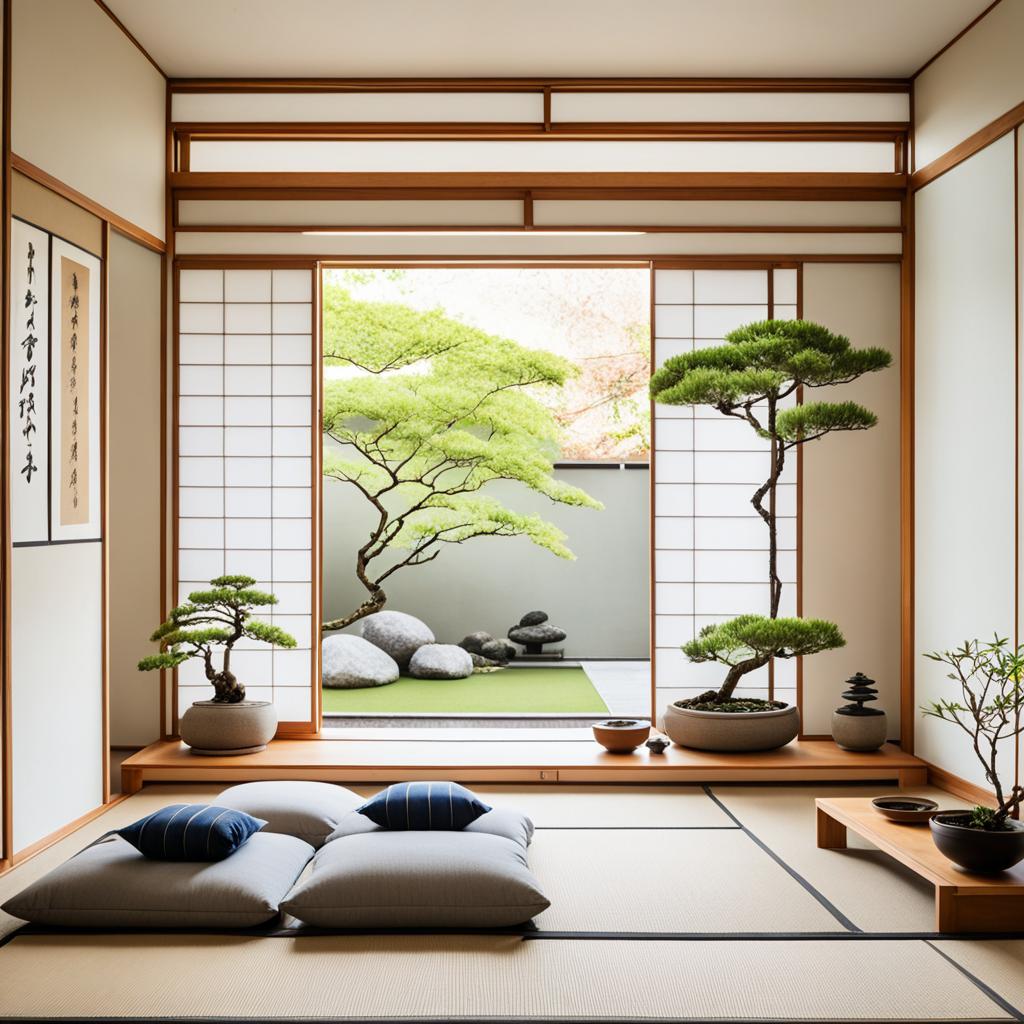
A japanese style living room is all about certain features that make it comfy and peaceful. Low seating and tatami mats are key in making it a place for relaxation and calm living.
Low Seating Options
Low seating is key to the real feel of a japanese style living room. With floor cushions, or zabuton, and low furniture, it becomes a cozy spot for chilling out. This setup makes you feel close to the ground, which is good for comfort and making friends.
Use of Tatami Mats
Tatami mats are a big part of what makes a japanese style living room look good. They’re not just for looks; they’re also warm and help divide up the space. Their unique texture adds beauty and brings in a natural feel that shows off the Japanese way of life.
Transforming Your Space with Shoji Screens
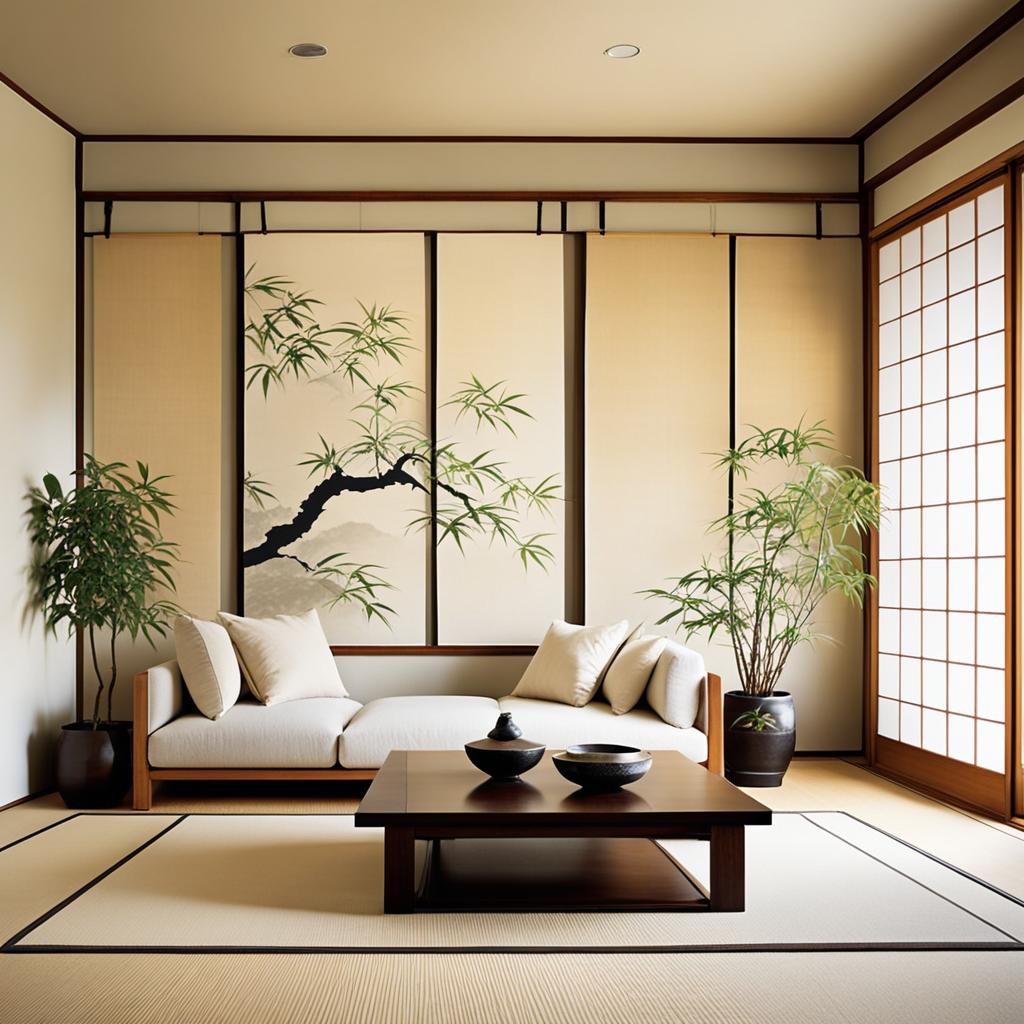
Shoji screens are key in making a room look like a traditional Japanese living area. They mix practicality with beauty. These sliding doors improve privacy and add a special look to the room. With their detailed wooden frames and see-through paper, they do more than one thing, making the room feel better.
Benefits of Shoji Screens
Shoji screens offer many benefits for any living space:
- Natural Light Diffusion: The see-through material lets soft sunlight into the room, making it feel warm and welcoming.
- Space Flexibility: Their sliding feature makes it easy to change an open area into a private spot.
- Privacy Without Isolation: Shoji screens keep the room quiet but still let you see outside, balancing openness with privacy.
Versatility in Room Layouts
Shoji screens are very versatile. They fit well with many interior styles and add to the Japanese feel of a living room. Here are some ways to use them:
- Room Dividers: Use shoji screens to make separate areas for relaxing, working, or eating in a big room.
- Accent Pieces: Add them as eye-catching parts of your decor, showing off cultural beauty and creativity.
- Flexible Configuration: Move screens around as needed, making your living space change for different events and moods.
Utilizing Fusuma Doors for Flexibility
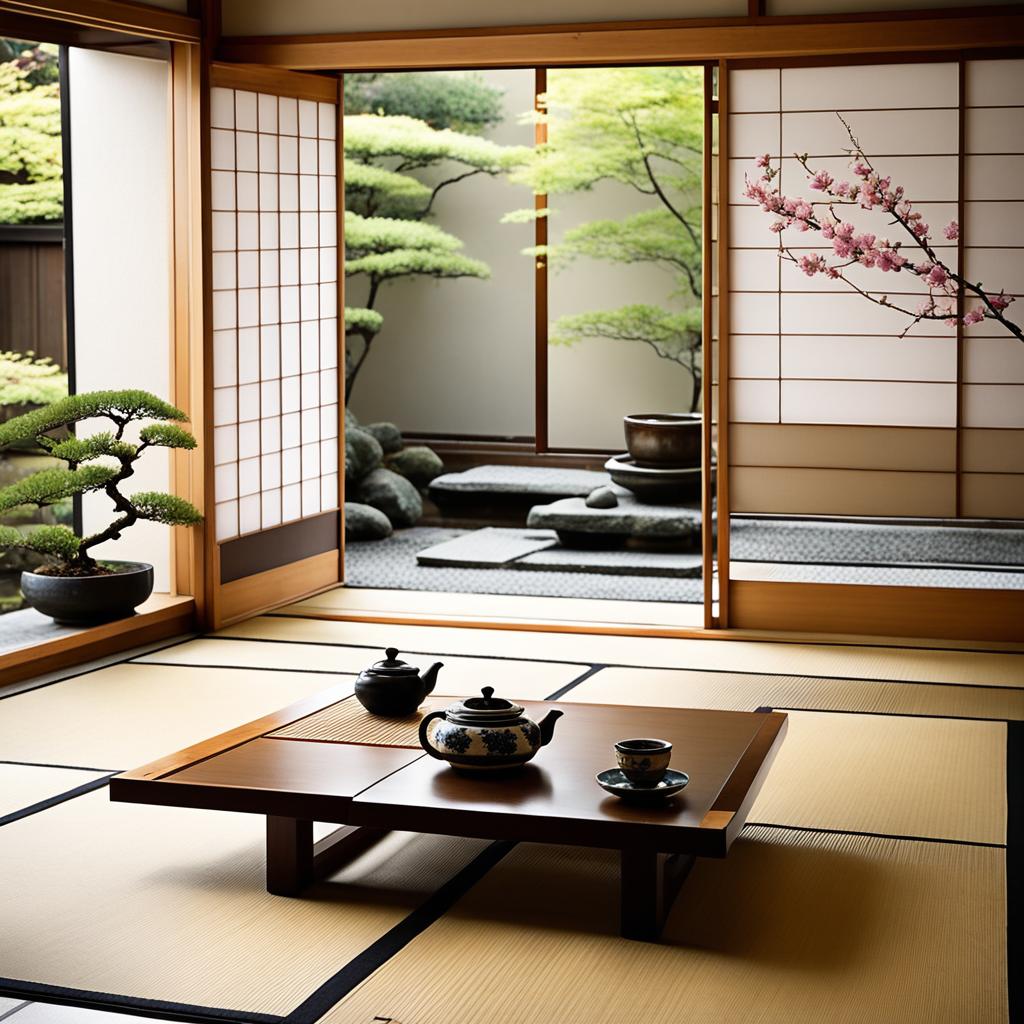
Fusuma doors are key to making a japanese style living room flexible. They are made with a wooden frame and paper. This makes them different from regular walls. You can easily open or close them, which makes the room feel bigger and more adaptable.
Creating Open Spaces with Fusuma
Adding fusuma doors to your living room makes it open and changeable. When open, they connect different areas, making it great for hanging out. When closed, they give you privacy and a cozy feel. This makes the room perfect for relaxing or having fun.
Fusuma doors also make your living area look better. They have nice textures and patterns that add to the room’s look. This makes your japanese style living room a place that’s always ready for anything, from quiet nights to big parties.
Incorporating Natural Materials
Using natural materials is key to making a Japanese style living room peaceful and elegant. Wood, bamboo, and stone add beauty and connect us to nature. They make the space feel calm and refined.
Wood, Bamboo, and Stone as Central Elements
Wood, bamboo, and stone are essential for a cozy feel. They add texture and warmth to the room. Wood is great for furniture and floors, giving a solid feel.
Bamboo is sustainable and perfect for decorations or building parts. It adds an organic look. Stone, like in fireplaces or countertops, brings a sense of lasting beauty.
Textiles and Rugs that Complement the Look
Choosing the right textiles is important in this peaceful space. Natural fabrics like linen and cotton make furniture soft and in line with the theme. Rugs from jute or other natural materials add warmth and comfort.
These choices enhance the look and feel of the room. They let people enjoy the calmness of the space fully.
Practical Tips for Achieving a Zen-Inspired Living Room
To make a living room Zen-inspired, focus on decluttering and choosing the right furniture. A clean space helps you relax and connect with the calming aspects of Zen decor.
Decluttering Your Space
Decluttering is key for a peaceful retreat. Begin by removing items that don’t have a purpose or add beauty. A clean space invites peace, letting you enjoy the decor’s natural beauty.
Use storage solutions to keep things organized and looking good. This keeps your space tidy and inviting.
Functional and Multifunctional Furniture Suggestions
Choose furniture that serves more than one purpose to make your space better. Convertible sofas or storage ottomans are great for this. They add utility without losing style or comfort.
Low-profile furniture also fits well with the Zen look. It blends into the decor while offering the functionality you need. This makes your room both stylish and practical.
Adding nature to your space can make it even more peaceful. For ideas on how to do this, check out watercolor floral wallpaper. It brings calmness and serenity indoors. Visit this link for more inspiration.
| Furniture Type | Main Feature | Benefits |
|---|---|---|
| Convertible Sofa | Transforms into a bed | Maximizes space and function |
| Storage Ottoman | Hidden storage | Keeps clutter at bay |
| Low Coffee Table | Minimalist design | Simplifies the room’s look |
| Bamboo Shelves | Natural material | Eco-friendly and stylish |
Conclusion
A Japanese style living room with Zen principles turns your home into a peaceful haven. By using minimalist design and embracing the beauty of wabi-sabi, you can make a space that feels serene and balanced.
Adding zen decor like soft lighting and neutral colors makes your space more calm. Low seating and tatami mats also add to the peaceful vibe. Using natural materials like wood and stone brings warmth and simplicity to your room.
By following these ideas, you can live a life filled with beauty, elegance, and peace. With careful planning and design, your living room can be a place of relaxation. It will improve your daily life.

